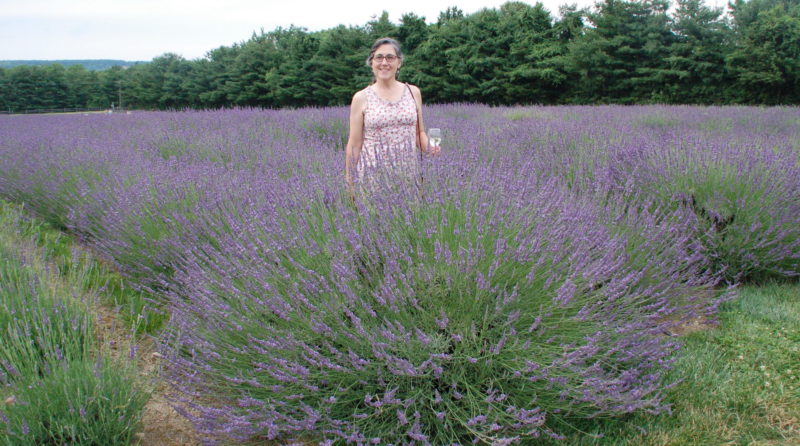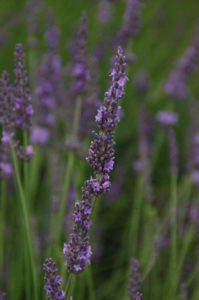
Culture Report: Lavender ‘Phenomenal’
Did you know that lavender sells in the highest quantities worldwide of any of the “typical” perennial plants? More than hostas and daylilies even, but the reasons are unique to lavenders. Lavender is not just ornamental but has multiple uses — medicinal, aroma and fragrances, culinary, essential oils, fresh and dried flower stems, buds, distilling, brewing and decorative arts.
Two types of lavender make up almost 100 percent of the production, L. angustifolia and L. x intermedia hybrids. There is a new cultivar of L. x intermedia that is becoming the “gold standard” in North America, Europe and Asia and now in the Southern Hemisphere. It has proven to be the easiest and most consistent performer for propagators, growers, retailers and consumers, and is asked for by name. ‘Phenomenal’ exhibits strong hardiness, tolerates drought, has exceptional year-round beauty, and has been tested and proven widely. Richard Hawke of the Chicago Botanitcal Garden just published a report of seven years of trials of lavenders for northern conditions. Lavender ‘Phenomenal’ was the only intermedia to get a coveted 4.5 star rating. One thing that sets it apart is its ability to handle the heat and humidity of southern U.S. conditions far better than any other cultivar.
‘Phenomenal’ is available widely, from a network of licensed rooting stations and is also available worldwide as unrooted cuttings from top cutting farms. These include Quality Cuttings
(formerly HMA), Darwin, Dümmen Orange, Kientzler InnovaPlant, Hishtil, Ball FloraPlant and others. Outside of North America, it is administered by Plantipp (www.plantipp.eu).
PROPAGATION 
Lavender ‘Phenomenal’ is propagated only from cuttings or division. Examine cuttings upon arrival for temperature issues — if they have been too hot, they will show a dark band in the stem and are useless. If they are wilted, moisten the bag and refrigerate overnight. If they look hydrated and turgid, it is best to stick immediately. Stick into a moist media, not sopping wet — they prefer good aeration. We prefer a 102 tray, but smaller or larger is fine. As small a hole as possible is recommended to allow easy sticking. As trays are accumulated before going into the propagation area, make sure they are misted to stay turgid.
Maintain temperature at 72° F day and night, and it is essential to never allow the cuttings to wilt for the first few days — but do not overdo the mist either. We have found that tracking VPD (vapor pressure deficit) is an effective method. You want to see the foliage dry between mist cycles but not wilting, and soil should be moist but not dripping. The recommended scheme is 125 millibars for the first three days, then 150, 175, 200, 250, 300, 375, 450, 550, 675, 800, 1000 and then off — less mist daily and strong cutback as soon as you begin to see callus.
Once roots are formed and the plant is off mist, start to dry the soil more between irrigations, and you can also cut the root temperature to more typical day/night regime. Do not dry to the point of wilting at this stage, but you need to let it dry down to force roots to grow. One trick with ‘Phenomenal’ is that it always grows root before it grows tops, at all stages, so check for roots and do not fret about the shoot not extending at this time. By 21 days, the cell should be fully rooted.
PRODUCTION TIP
It is better to pinch the rooted cutting at this stage and flush the branches out before transplanting. Conversely, you may plant, establish and then pinch. But, it is important NOT to do both concurrently! At Peace Tree Farm, we allow five to six weeks to get to pinching size in trays, then pinch and flush, and ship or plant branched cuttings after eight weeks.
Also, remember that it grows roots first, so do not panic if you see little top growth immediately. It will size up.
TRANSPLANTING AND GROWING ON
Two keys are excellent drainage in your potting media and low fertility. It is a very common statement among lavender growers that lavenders do not need fertilizer, and that is simply not true. However, it does not require high levels, although it loves extra calcium sources. Peace Tree Farm has worked closely with JR Peters; they have experience with lavender requirements and can offer custom recommendations. Lavender does better in an alkaline or a neutral environment, and does NOT like acidic conditions. Low levels of fertility produce a harder, tougher plant. Our feed recommendation is 100-ppm nitrogen, low phosphorus, plenty of calcium, pH 6.8 and above.
Drainage is crucial, wet feet kills all lavenders! ‘Phenomenal’ will stun you with its ability to withstand drought. Let it run dry. All of our soils have Rootshield Plus (BioWorks) incorporated, and pest control is biological.
We transplant into a quart pot typically from a 102 tray. A spring planted cutting takes six to eight weeks to size for sale. We also use a 32 deep cell for gallon or field transplanting and allow 10 weeks in spring. The best method, if you have space and structures, is to plant in late summer, bulk, and then go dormant. They will all bloom that next spring.
VERNALIZATION AND FLOWERING
‘Phenomenal’ requires vernalization to bloom, if blooming pots are required. Nights of 50° F or below are required. Six weeks is minimal, eight weeks is optimal, and 10 weeks is better at near cardinal temperatures. In Northern areas where temperatures are far lower, six to eight weeks is plenty of vernalization. We place bulked quarts in a production greenhouse, not a hoop house, set at 35° F, and we ventilate at 40° F as long as we can. Growers are instructed to just stay away, and they may be irrigated as few as four to five times from late December until April, as conditions require.
As it warms and days lengthen, we begin a slow increase in irrigation and feed and allow the natural temperatures to take control of growth, but we cool as low as our equipment will allow. ‘Phenomenal’ will show you when it has broken dormancy — the new growth will start to turn green from its usual beautiful silver, and flower stalks will begin to elongate.
‘Phenomenal’ also can be programmed to flower for dates and holidays. Once you know the optimal vernalization requirements for setting buds are met, bring the plants into a temperature-controlled area to bloom for a set date. We recommend a root temperature of 60 to 64° F and extended daylength. Photoperiod lighting will work, but we have found better quality with HPS lights and are trialing LED now. Eight weeks of this regime will force the first bloom.
PESTS AND DISEASES
Pests are usually not a major issue with lavender ‘Phenomenal’, although you may see some aphids at low levels. Thrips can invade, but they are not a preferred host, same for spider mites.
Diseases are the main production issue, primarily water molds. Phytophthora and Pythium are the usual culprits and prevention is key. Purchase cuttings only from clean stock sources and propagators you trust. We recommend doing your own testing. Additionally, Phytophthora can spread easily and can last for many years in field soils and not germinate until specific conditions are met.


 Video Library
Video Library 




















